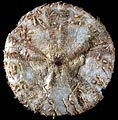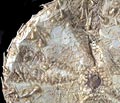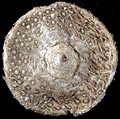The Echinoid Directory
Phormosoma Thomson, 1872, p. 493
| Diagnostic Features |
|
|---|---|
| Distribution | Recent, Indo-Pacific and Atlantic. |
| Name gender | neuter |
| Type | Phormosoma placenta Thomson, 1872, by original designation. |
| Species Included |
|
| Classification and/or Status |
|
| Remarks |
|




